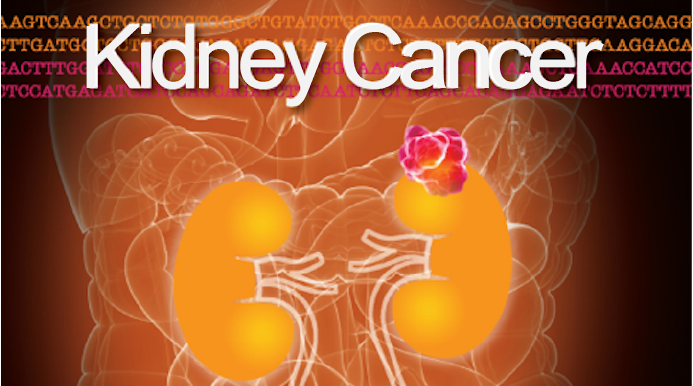
Immune Checkpoint Inhibitors in the Pre-operative Setting and Impact on the Primary Renal Tumor
Abstract
The treatment paradigm for metastatic renal cell cancer (RCC) has changed dramatically over the last decade with the United States Food and Drug Administration’s (FDA) approval of various combination regimens with a backbone of immune checkpoint inhibitors (ICI) [1–5]. Despite the documented efficacy of ICIs in the metastatic setting, many patients either do not respond or become resistant after an initial response. Furthermore, even after curative surgery for early stage kidney cancer, up to 60% of the highest risk patients are predicted to relapse [6]. Recently, the ICI pembrolizumab was approved by the FDA for use in the adjuvant setting following the positive results of a phase III trial showing a modest improvement in disease-free survival in favor of pembrolizumab compared to placebo [7]. However, the results of subsequent phase III trials using other ICIs in the adjuvant setting did not improve outcomes [8–10].
Systematic Review of Comparative Studies of 3D Models for Preoperative Planning in Minimally Invasive Partial Nephrectomy
Abstract
BACKGROUND:
The employment of 3-dimensional (3D) virtual models of the organs and tumors, obtained from conventional 2-dimensional (2D) imaging (i.e. computed tomography scan and magnetic resonance imaging) have already demonstrated an outstanding potential in urology, especially in renal surgery.
OBJECTIVES:
The aim of this systematic review is to provide an updated focus on the results obtained from the preoperative employment of 3D virtual imaging reconstructions in nephron sparing oncological surgery.
METHODS:
A systematic literature search was conducted in April 2022 using Medline (via PubMed), Embase (via Ovid), Scopus, and Web of Science. The search strategy used PICO criteria and article selection was conducted in accordance with the PRISMA guidelines. The risk of bias and the quality of the articles included were assessed. A dedicated data extraction form was used to collect the data of interest.
RESULTS:
The initial electronic search identified 471 papers, of which 13 ultimately met the inclusion criteria and were included in the review. 11 studies reported outcomes of virtual models, 2 studies focused on printed 3D models. In these studies, the application of 3D models for preoperative planning has been reported to increase the selective clamping rate and reducing the opening of collecting system, blood loss and loss of renal function.
CONCLUSIONS:
3D virtual models seem to provide some surgical benefits for preoperative planning especially for complex renal masses. In the future the continuous evolution of this technology may further increase its field of application and its potential clinical benefit.
Activity of Immunotherapy Regimens on Primary Renal Tumours: A Systematic Review
Abstract
BACKGROUND:
Immune checkpoint inhibitors (ICPIs) are widely used in treating metastatic renal cell carcinoma (RCC). Cytoreductive nephrectomy (CN) forms part of multimodality treatment in advanced disease, however there is no prospective evidence for its use in the ICPI era. Trials of neoadjuvant ICPIs in RCC are underway; understanding the anticipated effect of ICPIs on the primary tumour may help clinical decision making in both localised and advanced settings.
METHODS:
A systematic search (PubMed, Web of Science, clinicaltrials.gov) of English literature from 2012 to 2022 was performed according to PRISMA guidelines. 2,398 records were identified, 54 were included in the analysis.
RESULTS:
In the metastatic setting, response in the primary tumour (≥30% reduction in size) is seen in 33–56% of patients treated with dual ICPI or ICPI + VEGFR-TKI. Pathological complete response rates were 14% for patients undergoing CN after a period of ICPI therapy. In the neoadjuvant setting there is a single published trial of VEGFR-TKI + ICPI, 30% of patients had a≥30% reduction in size of the primary. This appears superior to single agent ICPI. Grade 3 adverse event rates are comparable to the metastatic setting.
CONCLUSIONS:
A period of ICPI combination therapy followed by nephrectomy may be considered for selected patients as a strategy to manage metastatic disease. In the neoadjuvant setting, it is not clear whether ICPI + VEGFR-TKI is superior to VEGFR-TKI alone. There is minimal data on whether either CN after ICPI in metastatic patients, or neoadjuvant ICPI therapy for localised disease, improves long term survival.
Clinical Trials Corner: Another Approach to Treatment of Advanced Papillary Renal Cell Carcinoma
Abstract
Multicenter Phase II Study of Axitinib +/- Pembrolizumab in First Line Treatment of Patients with Locally Advanced or Metastatic Papillary Renal Cell Carcinoma (pRCC)
Status: Recruiting
Clinicaltrials.gov identifier: NCT05096390
Sponsor: Centre Leon Berard
Enrollment: 72
Rationale: The optimal treatment of advanced papillary RCC (PRCC), which constitutes <15% of all RCCs, remains in question. The Axipap Phase II study evaluated axitinib in patients with advanced papillary RCC, and demonstrated a 35.7% investigator assessed response rate in the Type 2 subgroup of PRCC. Pembrolizumab has also been studied in non-clear cell RCC patients, including those with papillary RCC. In PRCC patients, in a single-arm study of pembrolizumab, an objective response rate of 28% was observed. As such, this study seeks to examine whether the combination of pembrolizumab plus axitinib could improve outcomes in Type 2 PRCC patients.
Study Design: This randomized Phase II multicenter study enrolls patients with histologically proven Type 2 or mixed PRCC that is either locally advanced or metastatic. Patients must have adequate organ and hematologic function and good performance status. Participants cannot have received prior systemic therapy for RCC even in the adjuvant setting, and cannot have untreated brain metastases. Patients are randomized to receive either axitinib (5 mg orally twice daily) plus pembrolizumab (200 mg every 3 weeks intravenously) or axitinib (5 mg orally twice daily) until the time of disease progression or unacceptable toxicity. Axitinib dosing may be increased to up to 10 mg twice daily if patents tolerate.
Endpoints: The primary endpoint of this study is 6-month objective response rate (ORR), evaluating the efficacy of axitinib + pembrolizumab versus axitinib alone. The secondary outcomes include duration of response, best overall response, progression-free survival, overall survival and incidence of adverse events.

